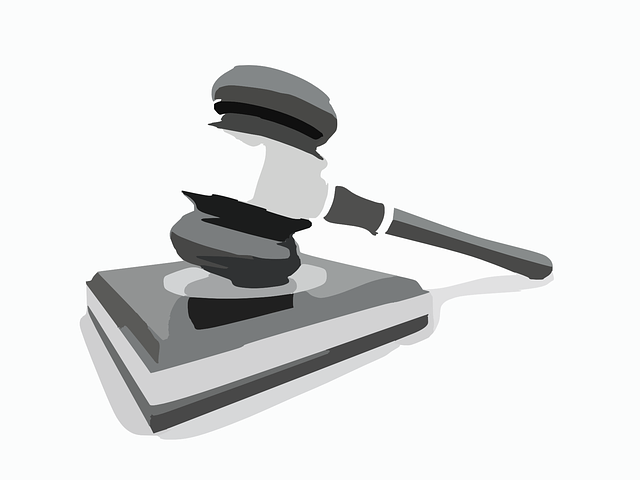TL;DR:
Managing litigation risks through proactive measures like regular contract review, clear communication, and a culture of mutual respect is vital for avoiding legal battles in business partnerships. By minimizing triggers such as contractual disputes or misunderstandings, companies enhance their chances of successful defense or charge dismissal. This approach—similar to criminal defense strategies focusing on prevention over prosecution—promotes early issue resolution, swift negotiation, and preservation of strong business alliances, even in complex scenarios. Effective documentation, communication channels, and dispute resolution processes are key components of this strategy.
In today’s complex business landscape, understanding and managing litigation risks is paramount to ensuring stability and growth. This article explores critical aspects of avoiding legal battles in business partnerships, focusing on common triggers that ignite disputes and their potential impacts. We delve into proactive strategies for mitigating risks through robust partnership agreements and establish comprehensive protocols for effective documentation, communication, and dispute resolution processes.
- Understanding Litigation Risk: Common Triggers and Potential Impacts on Businesses
- Proactive Strategies for Mitigating Legal Disputes in Partnership Agreements
- Building Robust Protocols: Documentation, Communication, and Dispute Resolution Processes
Understanding Litigation Risk: Common Triggers and Potential Impacts on Businesses
Understanding Litigation Risk is a critical step in avoiding legal battles that can significantly impact business partnerships. Common triggers for litigation include contractual disputes, breaches of duty, and allegations of negligence or intentional harm. These conflicts can arise from misaligned expectations, unclear terms, or misunderstandings between partners. The potential impacts are vast, ranging from financial losses due to damages awarded, to reputational harm from negative publicity, and even the disruption or dissolution of business relationships.
Businesses with a strong unprecedented track record in litigation management are better equipped to navigate these challenges. A proactive approach involves regular review and updating of contracts to ensure clarity and fairness, establishing robust communication channels, and fostering a culture of mutual respect and understanding among partners. By minimizing triggers and preparing for potential disputes, businesses can enhance their chances of achieving winning challenging defense verdicts or, ideally, securing the complete dismissal of all charges.
Proactive Strategies for Mitigating Legal Disputes in Partnership Agreements
In business partnerships, proactively managing litigation risk is key to avoiding legal battles and ensuring smooth operations. A robust strategy begins with meticulous contract drafting. Attorneys should incorporate clear, detailed language that defines roles, responsibilities, and dispute resolution mechanisms. Establishing a transparent decision-making process for resolving disagreements before they escalate can significantly reduce the likelihood of costly legal disputes.
Additionally, regular communication and transparency among partners are essential. Regular meetings to discuss performance, potential issues, and concerns can help identify problems early on. Investing in robust internal communication channels facilitates quick issue resolution through negotiation or mediation, thereby avoiding the need for lengthy, expensive court battles. Remember, achieving extraordinary results in business partnerships often hinges on effectively implementing these proactive strategies aimed at avoiding legal disputes, mirroring a successful general criminal defense approach that prioritizes prevention over prosecution.
Building Robust Protocols: Documentation, Communication, and Dispute Resolution Processes
In the realm of business partnerships, avoiding legal battles is a cornerstone of sustainable growth and success. Building robust protocols for litigation risk management serves as a bulwark against potential disputes, fostering an environment conducive to collaboration and mutual prosperity. Comprehensive documentation stands as the bedrock of these protocols, meticulously outlining expectations, roles, and responsibilities to minimize ambiguity and miscommunication.
Effective communication channels further strengthen this foundation by ensuring open dialogue, quick issue identification, and swift resolution. Moreover, establishing clear dispute resolution processes, whether through mediation, arbitration, or litigation, empowers parties to navigate conflicts constructively. An unprecedented track record of successful conflict management within the philanthropic and political communities attests to the transformative power of these protocols in mitigating risks and preserving strong business partnerships, even in the face of complex white-collar and economic crimes.
In conclusion, effective litigation risk management is pivotal for businesses aiming to avoid legal battles in partnerships. By understanding common triggers and potential impacts, implementing proactive strategies such as robust documentation and clear communication, and establishing well-defined dispute resolution processes, companies can significantly mitigate risks. These measures not only protect against costly disputes but also foster healthier, more productive business partnerships.






